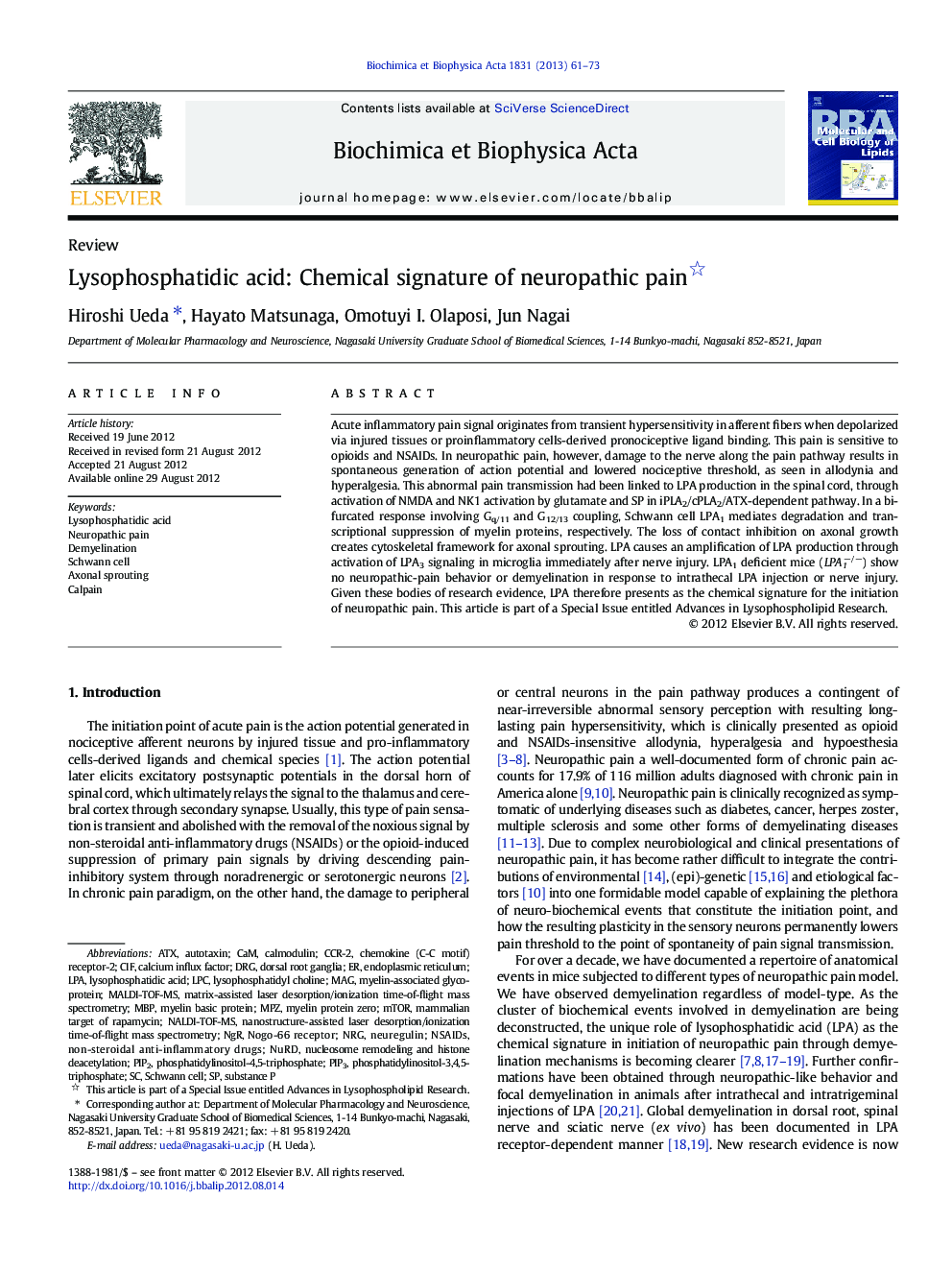| Article ID | Journal | Published Year | Pages | File Type |
|---|---|---|---|---|
| 1949313 | Biochimica et Biophysica Acta (BBA) - Molecular and Cell Biology of Lipids | 2013 | 13 Pages |
Acute inflammatory pain signal originates from transient hypersensitivity in afferent fibers when depolarized via injured tissues or proinflammatory cells-derived pronociceptive ligand binding. This pain is sensitive to opioids and NSAIDs. In neuropathic pain, however, damage to the nerve along the pain pathway results in spontaneous generation of action potential and lowered nociceptive threshold, as seen in allodynia and hyperalgesia. This abnormal pain transmission had been linked to LPA production in the spinal cord, through activation of NMDA and NK1 activation by glutamate and SP in iPLA2/cPLA2/ATX-dependent pathway. In a bifurcated response involving Gq/11 and G12/13 coupling, Schwann cell LPA1 mediates degradation and transcriptional suppression of myelin proteins, respectively. The loss of contact inhibition on axonal growth creates cytoskeletal framework for axonal sprouting. LPA causes an amplification of LPA production through activation of LPA3 signaling in microglia immediately after nerve injury. LPA1 deficient mice (LPA1−/−) show no neuropathic-pain behavior or demyelination in response to intrathecal LPA injection or nerve injury. Given these bodies of research evidence, LPA therefore presents as the chemical signature for the initiation of neuropathic pain. This article is part of a Special Issue entitled Advances in Lysophospholipid Research.
► Roles of LPA-signaling in the development of neuropathic pain and its mechanisms ► LPA1 receptor-mediated mechanisms for demyelination and sprouting ► Roles of early phase of microglial activation in LPA-induced LPA production ► Roles of LPA3 receptor signaling in the feed-forward LPA production.
